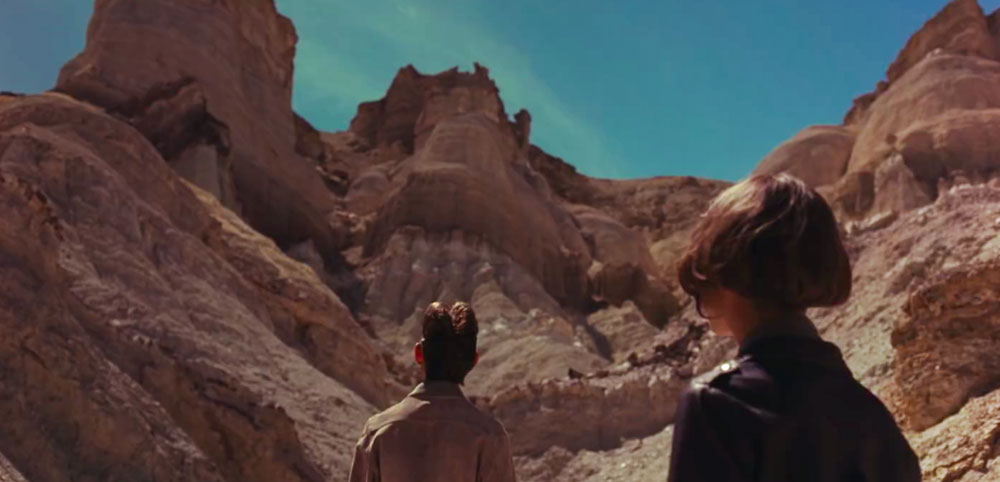Hernan Corera
«Colours unconsciously convey emotions»
Agoria left the Argentine director Hernan Corera carte blanche for the clip You are not Alone. He explains to us how this powerful and mystic movie was born. Interview.
By Tess Volet and Lisa Muratore

When you heard the title You are not Alone for the first time, how did you feel about it?
It’s sometimes quite complicated to explain the mystery of the pictures that music causes inside everyone of us. But in this particular case, I have to admit that the song instantly inspired me a feeling of goodbye… Goodbye to the beloved one, but with a uncertain colour of hope. There’s a mystic halo in this title that moves me. I naturally saw the desert and the mountain. These are two symbols deeply connected to transcendence and death. But the wind blowing on these territories whispers the secret of life, no one is alone, even in this unkown country which is death. This living nature, but silent, has been essential to create the universe of our characters.
How did you create this universe? Pictures are powerful, thanks to metaphors but also to the method you used…
The main purpose of this video is to be able to explore pictures that work visually and aesthetically, but also that have a dramatic function in the fragmented story taking place during the song.
We shot in 35mm and we worked a lot with mirrors, in order to deepen our reflection about vanity, but also as an opening to a hidden personal knowledge. A metaphor we depicted in showing characters looking directy to the camera through mirrors, which breaks the Fourth Wall.
We can interpret the video-clip in several ways, including its end. Personally, I have always been attracted by artistic works that show something without entirely revealing it, and leave us spaces to project ourselves in side the story.
It makes work live longer, interpretation depends a lot on the moment we watch the clip. On the other hand, it’s important to set up a solid and credible world in order to make it work. The key of the process was to start with a traditional narrative of funerals. A good framework for a plot in order to introduce afterwards a strange and mystic gang.
The end evokes the circle of life. The title of the song is represented in the new born who will never be alone despite the absence of his father (the leader). However, I’ve heard many members of the audience develop a theory about reincarnation and it sounded both fantastic and puzzling to me.
The sense of detail has gone as far as choosing actors with atypical physical appearance.
Their face tell a story, their look are significant. The three main actor form an interesting energising triangle which allowed us to emphasize the tragedy and implicit bonds that connect them. For the leader character, we were looking for a man who would convey both feminine and masculine energy, but also who would have a certain charisma that could hypnotise the audience. For the main characters, the brother and the sister, we were looking for contradictory energies; feminine for the first one and masculine for the second one. Even though there ar eno explicit links between their roles, the casting’s choice is really important in order to reach the dramatic climax we’re looking for.
The choice of colours, the technic seems very important, is is connected to your passion for photography…
The director of photography, Mariano Monti DOP, decided to use a 35mm with the film Fuji 500 Eterna and made important choices regarding the scenery and costumes with Cornas/Cavia (artistic director) and Sol Canjevsky (costume designer). Moroever, my main purpose when I comit myself to a new project, is to improve my technic and my creativity, even though I work with my intuition with only one camera.By the way, during the shootinf of You’re not Alone, the challenge to film with a 35mm caused some exciting difficulties, joyful but pretty exhausting. Furthemore, we thought it was safe to respect the 4:3 frame in order to get a retro photographic effect. Finally, I wanted to pay tribute to Argentine directors of the middle of the 20th century such as Leonardo Favio, Torre Nilsson or Saslavsky.
Is this colour palette also an palette of shades and emotions?
The colour contrast corresponds to our desire to explore the contradictions of human emotions. The places outside, pigmented with colrd colours, expose our characters to wide and unwelcoming territories, whereas places inside, with warm colours, plunge them into emotions connected to social order, to hierarchies they fight. It’s based on a contrast between shadow and light, between subjectivity and change of perspective, between good and evil. I believe this story talks about awakening, about reaching epiphany. But beyond that, I talk about love in its variety of shapes. Including brotherly love.


